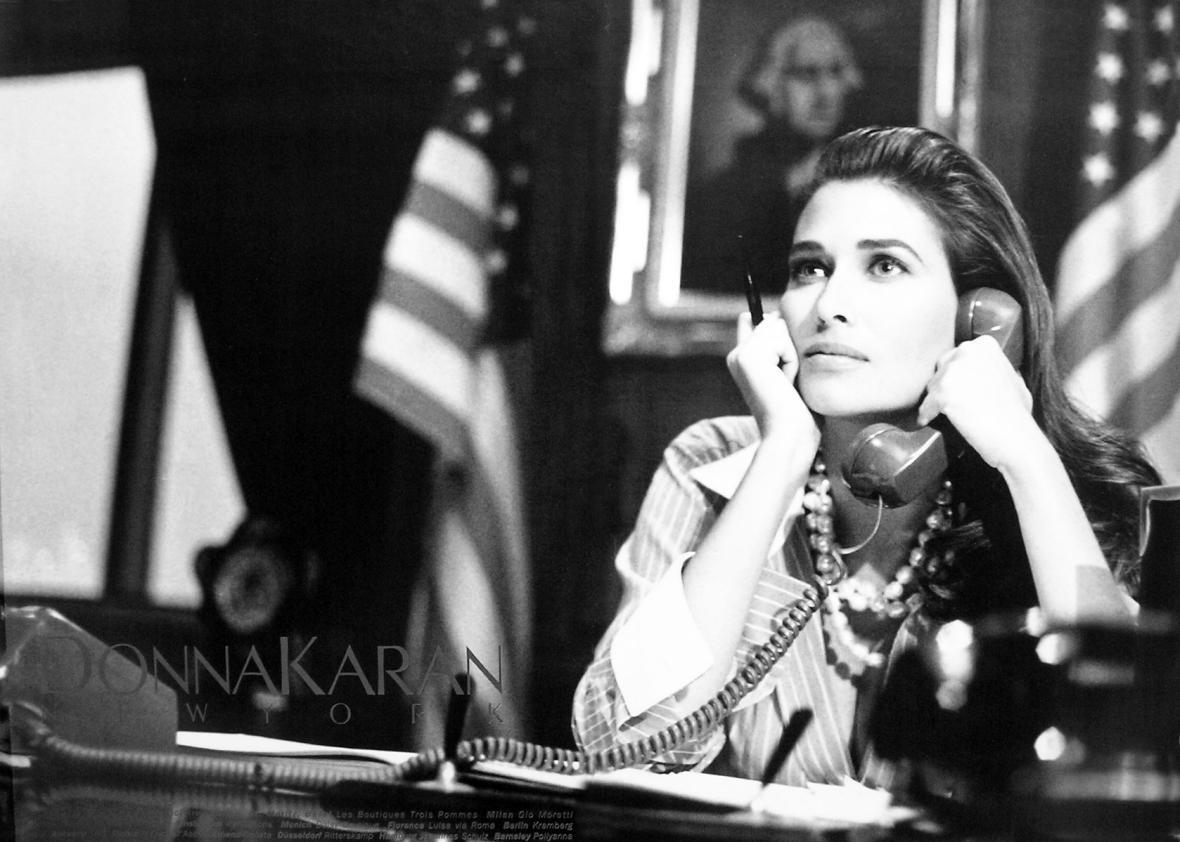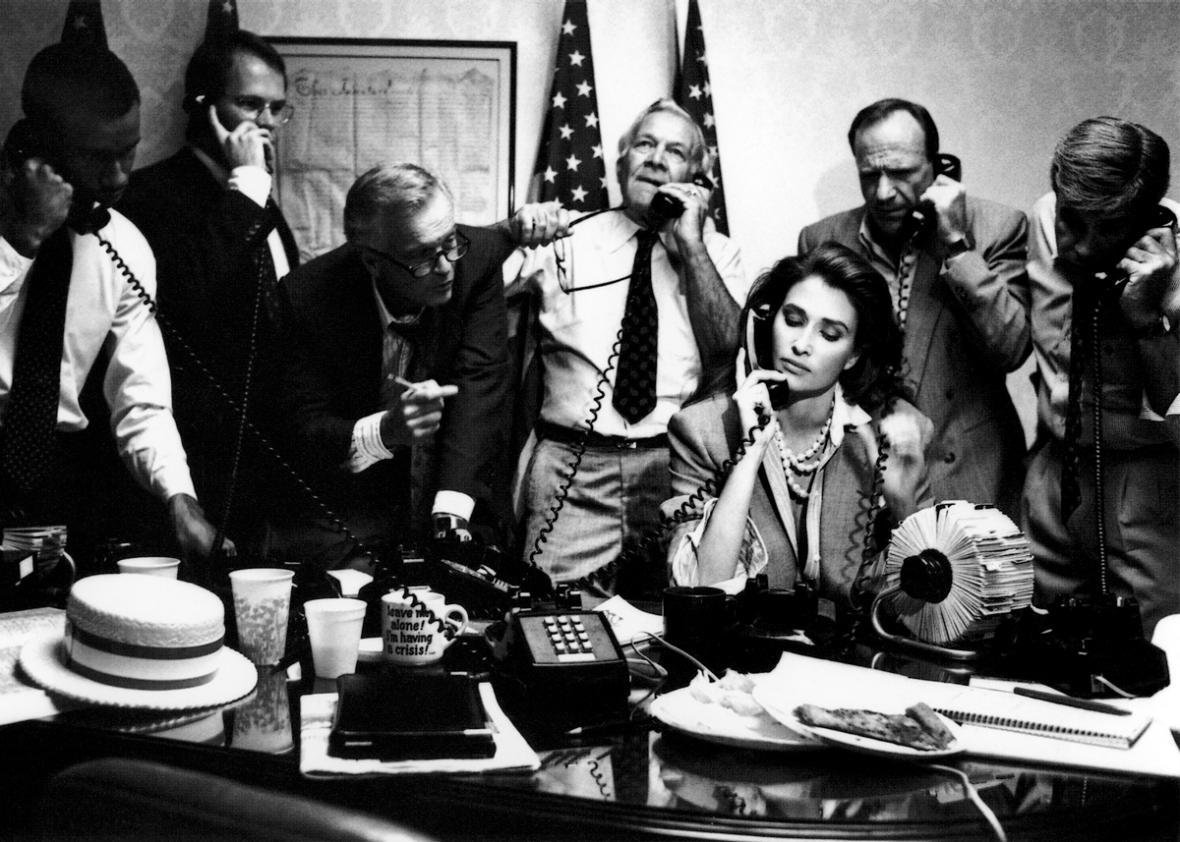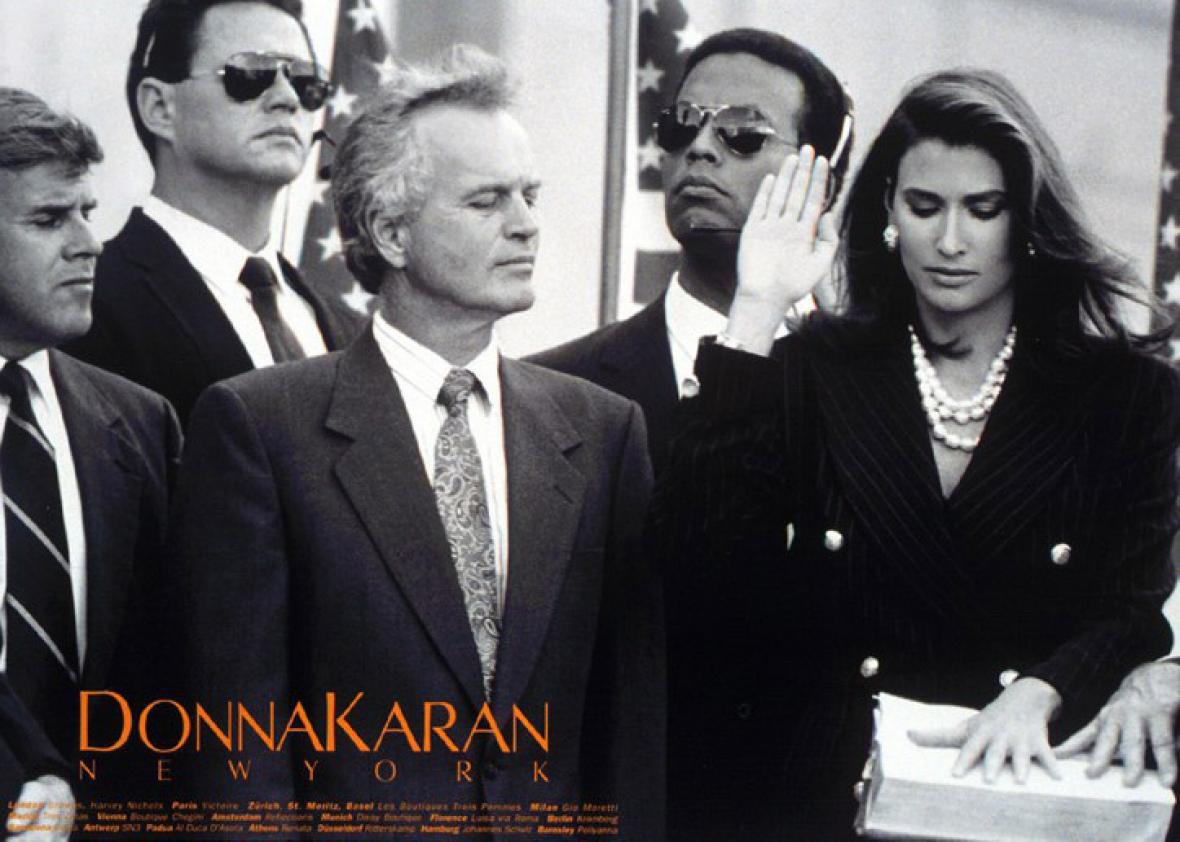Hillary Clinton’s pantsuits have gotten plenty of press, but she’s not the first to imagine a structured blazer, neutral-toned trousers, and kitten heels striding into the Oval Office. That honor belongs to Donna Karan, whose 1992 ad campaign “In Women We Trust” depicted model Rosemary McGrotha going through the motions of a recently elected public official, all in Karan’s famous feminized menswear.
Many interpreted the ads as the imagined life of the first female U.S. president, if the first female U.S. president were a dead ringer for Melania Trump rather than a former Secretary of State. Karan’s ads make the presidency look like it was art-directed by Lana Del Rey—all slo-mo and high contrast, shallow focus and delicate, practiced ennui. In Madame President’s ticker-tape parade, her crisp oxford blows open to reveal a presidential décolletage supported by what looks like a black lace bustier. She juggles child care duties with required reading in a tube top. Our suspiciously youthful commander-in-chief commands the respect of her old, male associates in double-breasted pinstripes and a skirt slit up to there, hair always blown back, nary a part nor pore in sight. It’s a dream within a dream: A woman makes it to the top of the political food chain with her composure, mood lighting, and sensual wardrobe intact.

Peter Lindbergh/DKNY
In a profile of Karan that ran early this week in the Washington Post, fashion critic Robin Givhan reports that Karan recently sent Clinton a copy of the ad that showed McGrotha being sworn into office. “Wishes do come true,” Karan wrote. Givhan explains the genesis of the groundbreaking ad narrative:
[Karan] has been watching the [2016] presidential campaign and can’t help but think back to the advertisements that she commissioned in 1992 depicting a woman taking the presidential oath of office. “I’d just done a collection of all masculine [tailoring] with feminine [blouses]. It was this strong executive woman,” Karan says. So for the ads, she asked herself: What was the ultimate power position—beyond the corner office, beyond the boardroom, straight through the glass ceiling?

Peter Lindbergh/DKNY
Givhan and Karan might see it as presidential now, but back in 1992, the ad agency behind “In Women We Trust” insisted that it wasn’t meant to evoke the highest office in the land. “We’re not saying it`s presidential,” the executive creative director of Arnell/Bickford told the Chicago Tribune. “It’s generic politics. With so many things being down at the moment, it just seemed like a real opportunity to say that maybe women are the answer to helping and promoting new hope.” At the time, Karan told New York magazine that it wasn’t a “real feminist statement” at all—it was more of a commentary on the screwed-up state of U.S. politics. “It’s simply a statement that when times are bad—and this country is in trouble—you turn to the motherer, the nurturer,” she said. “I’m more of a female humanist, an equal opportunist, than a feminist.”
Karan said she wanted “In Women We Trust” to be timeless, not recognizable as any particular moment in time, since women don’t like to change clothes every season. She succeeded: Subtract a bulky lapel or two, and the photos look like they could have been taken at a contemporary campaign event. That’s as much a testament to Karan’s impact on women’s fashion as it is to the inertia of the world of political workwear. The all-male advisory teams that surround Karan’s president are roughly true to present, too. Under a President Clinton, at least, those might go the way of the shoulder pad.
